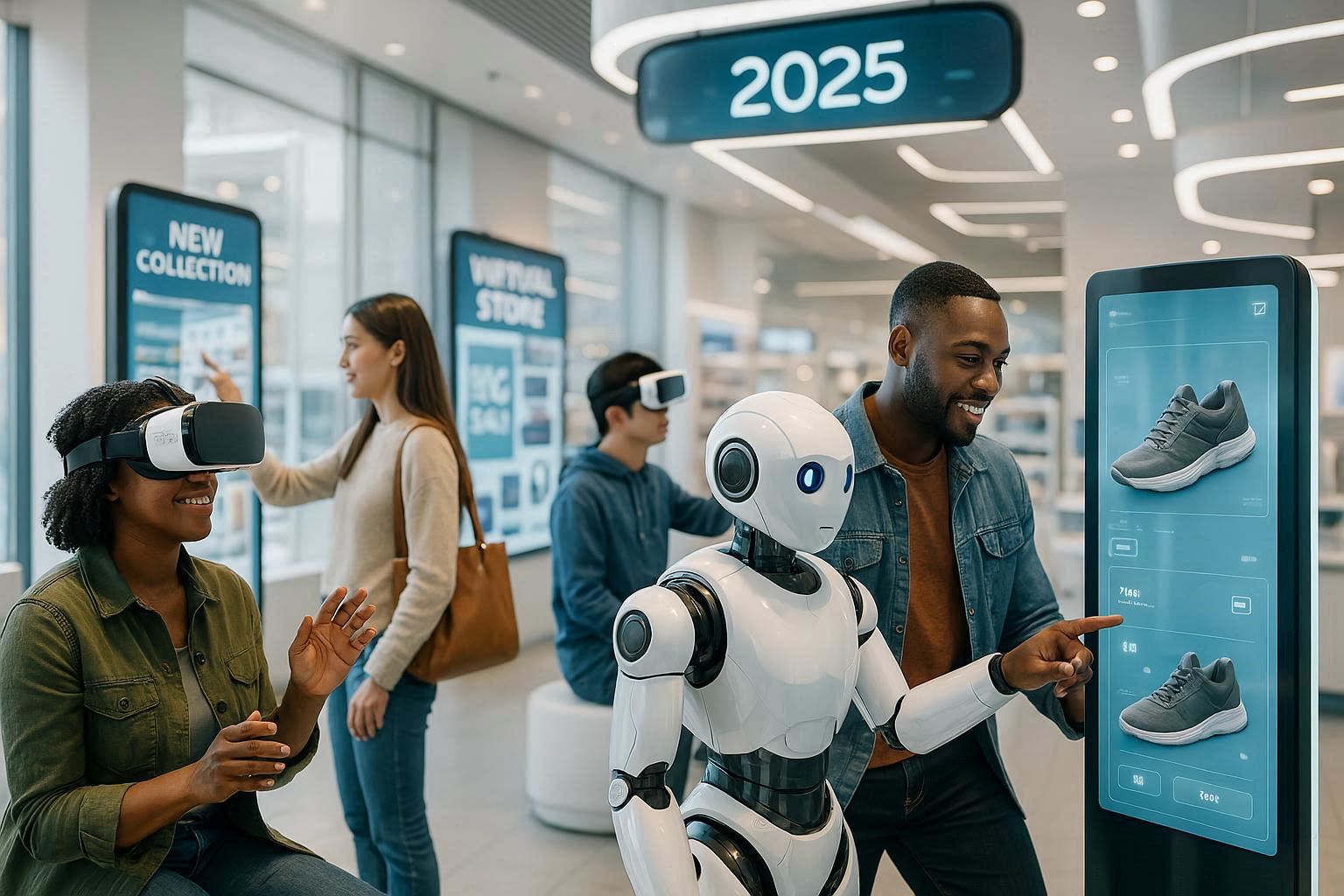Retail has always been a reflection of consumer behavior, and in 2025, that behavior is increasingly digital. From online marketplaces to social media shopping, e-commerce has become the dominant force in global retail. The shift to digital retail is not only changing how people shop but also transforming supply chains, employment, and the global economy.
This article explores how e-commerce is shaping the future of retail in 2025, the economic opportunities and risks it presents, and what businesses must do to stay competitive in an increasingly digital marketplace.
1. The Rise of E-Commerce
E-commerce has been growing steadily for decades, but recent years have accelerated its adoption:
- Pandemic Acceleration – COVID-19 forced consumers to shop online, creating habits that persist today.
- Global Connectivity – Widespread internet and smartphone access allow even rural populations to participate in digital shopping.
- Convenience and Variety – Customers can browse thousands of products, compare prices, and receive deliveries at their doorsteps.
- Innovation in Payment – Digital wallets, buy-now-pay-later options, and cryptocurrency payments are fueling growth.
2. The Economic Impact of E-Commerce
E-commerce is more than just online shopping—it is reshaping entire economies:
- Job Creation – E-commerce generates jobs in logistics, warehousing, digital marketing, and IT.
- Global Trade Expansion – Small businesses can now sell internationally without relying on traditional export channels.
- Consumer Spending Growth – Online platforms drive higher consumption due to ease of access and personalized recommendations.
- Retail Disruption – Traditional brick-and-mortar stores face closures, while hybrid models like click-and-collect are growing.
3. Changing Consumer Behavior
In 2025, consumers expect more than just products—they expect experiences. Some key shifts include:
- Mobile Shopping – A majority of online purchases are made through smartphones.
- Social Commerce – Platforms like Instagram, TikTok, and Facebook integrate shopping directly into social experiences.
- Personalization – AI-powered algorithms suggest products based on browsing history, boosting sales.
- Sustainability – Eco-conscious consumers prefer brands with sustainable packaging and ethical sourcing.
4. Technology Driving the Future of Retail
The future of e-commerce is fueled by technological innovation:
- Artificial Intelligence – AI powers chatbots, personalized recommendations, and demand forecasting.
- Augmented Reality (AR) – Customers can “try on” clothes, preview furniture, or visualize products before buying.
- Automation – Warehouses and delivery systems use robots and drones to reduce costs and speed up logistics.
- Blockchain – Provides transparency in supply chains and secures payment systems.
5. Challenges in the E-Commerce Sector
Despite its growth, e-commerce faces challenges that businesses must navigate:
- Cybersecurity Risks – Online fraud, data breaches, and scams threaten consumer trust.
- Logistics Bottlenecks – Delivery delays and rising shipping costs remain significant hurdles.
- Competition – The dominance of giants like Amazon and Alibaba makes it harder for smaller players to compete.
- Returns and Waste – High return rates in online retail increase costs and environmental impact.
6. The Future of Brick-and-Mortar Stores
While e-commerce is booming, physical stores are not disappearing. Instead, they are evolving:
- Experiential Retail – Stores focus on offering experiences that cannot be replicated online, such as product demos and events.
- Omnichannel Strategies – Businesses integrate online and offline shopping through click-and-collect or same-day delivery.
- Smart Stores – Physical shops adopt AI-powered checkouts, digital kiosks, and virtual fitting rooms.
The future will likely blend digital and physical experiences, with consumers moving seamlessly between the two.
7. E-Commerce and Global Trade
E-commerce has opened new doors for cross-border trade:
- Global Marketplaces – Platforms like eBay, Amazon, and Alibaba connect buyers and sellers across continents.
- Small Business Growth – Entrepreneurs can reach international customers without traditional export infrastructure.
- Faster Payment Systems – Digital wallets and blockchain solutions enable near-instant global transactions.
- Challenges – Customs regulations, shipping costs, and currency exchange remain barriers.
8. Sustainability and the Future of E-Commerce
As climate change awareness grows, e-commerce must adapt to sustainability concerns:
- Eco-Friendly Packaging – Companies are shifting to recyclable and biodegradable materials.
- Carbon-Neutral Shipping – Logistics companies are investing in electric vehicles and carbon offsets.
- Circular Economy – Resale platforms and product recycling are gaining popularity among consumers.
Businesses that prioritize sustainability will gain consumer trust and long-term loyalty.
9. The Future of Retail in 2025 and Beyond
The next decade will bring even more innovation in retail:
- Voice Commerce – Smart assistants like Alexa and Google Assistant will play a larger role in online shopping.
- Metaverse Shopping – Virtual reality stores and immersive shopping experiences may redefine digital commerce.
- Ultra-Fast Delivery – Same-day and even one-hour deliveries will become the standard in urban areas.
- Personalized Economies – AI-driven systems will create tailored shopping experiences for every individual.
Conclusion
E-commerce is not just changing retail—it is redefining the global economy. By 2025, online shopping has become the norm, driven by technology, convenience, and shifting consumer expectations. While challenges such as cybersecurity, logistics, and competition remain, opportunities for innovation and growth are greater than ever.
The future of retail lies in a hybrid model where physical and digital experiences complement each other, powered by AI, automation, and sustainable practices. Businesses that embrace change, prioritize customer experience, and adopt new technologies will thrive in this rapidly evolving landscape.

